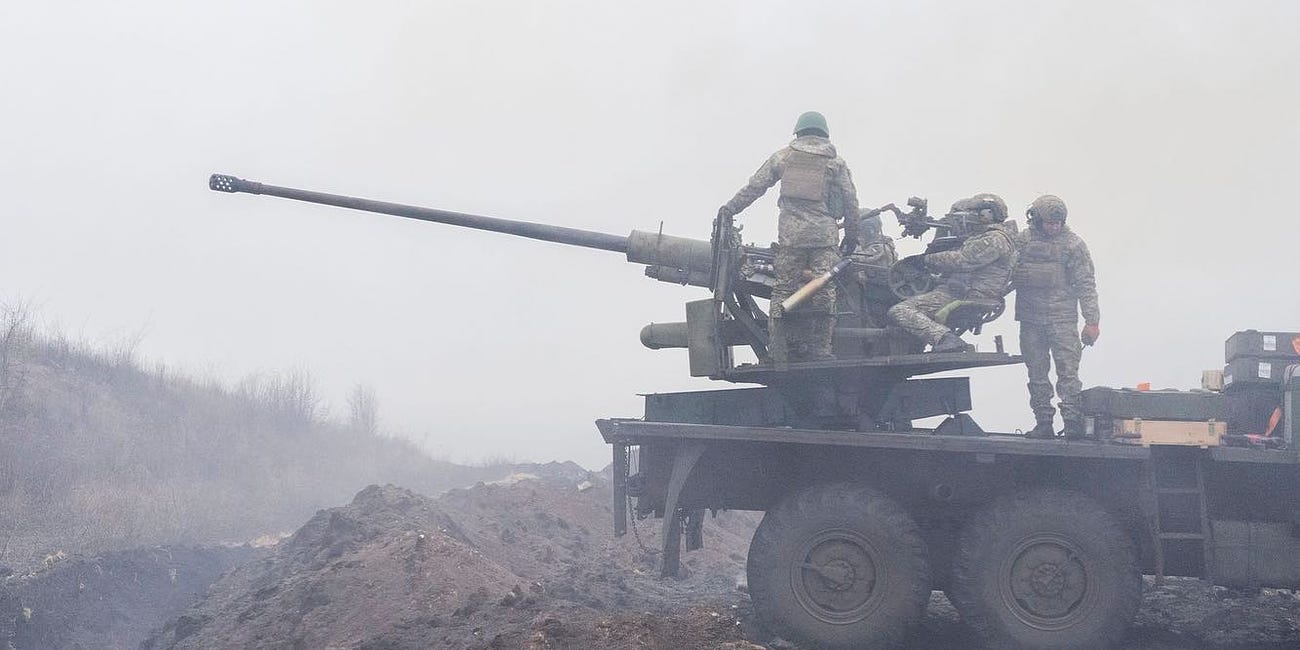Ukraine's Tankers Are Begging for Extra Armor for Their Surviving M-1s
The Abrams' turrets need more protection against drones
The United States gave Ukraine 31 M-1A1 Abrams tanks. They equip a single battalion in the Ukrainian army’s 47th Mechanized Brigade, which has been fighting a defensive campaign west of the ruins of Avdiivka in eastern Ukraine.
In several months of hard fighting, the 47th Brigade has lost around five of the 69-ton, four-person M-1s—to Russian drones, mostly.
The losses compelled the brigade to withdraw its surviving tanks in late April, the Associated Press reported, quoting—among others—U.S. Navy admiral Christopher Grady, vice chairman of the U.S. Joint Chiefs of Staff.
But one Ukrainian M-1 crewman told Ukraine’s Army T.V. that’s not true. “Full of lies,” the tanker said.
Instead, the 47th Brigade is being careful with how it deploys the 26 or so remaining M-1s, the tanker explained. “The situation is very difficult, because the Russians are superior in terms of personnel, equipment and everything, so we have to adjust our actions.
The 47th Brigade sends out M-1s only when there’s an opportunity to “go out and destroy the opponent’s vehicles,” the crewman said. The implication is that M-1s aren’t sitting in defilade among the outermost trenches, waiting for the Russians to attack; rather, they form a kind of reaction force that normally waits behind the front line.
The Ukrainian tanker conceded that the brigade might deploy the M-1s differently were they better protected against Russia’s explosive drones.
While Ukraine’s M-1A1s wear the standard M-19 Abrams Reactive Armor Tiles along the sides of their otherwise thinly-protected hulls; they don’t wear reactive armor on their turrets.
“We as a crew and as a battalion in general would like from our American partners to provide us with dynamic armor,” the tanker said, “so that we have not only the flanks protected, but also the turret.”
The U.S. Army remedied this problem with their latest M-1A2s by adding extra armor to their turret faces. But this armor likely includes depleted uranium, which the United States as a matter of policy doesn’t export. Before shipping M-1A1s to Ukraine, the Pentagon paid contractors to open up the tanks’ turrets, remove the uranium and replace it with tungsten.
It’s not impossible to hang ARAT armor on an Abrams’ turret. California-based Ensign-Bickford Aerospace and Defense, which manufactures the ARAT bricks, specifically described the bricks as “hull, skirt or turret armor.”
But the bricks attach to racks that tank-maker General Dynamics welds onto the M-1. It’s unclear what it would take for contractors to modify Ukraine’s surviving Abrams with the racks.
At the very least, it would take time—perhaps months. And the 47th Brigade surely can’t spare its tanks for that long.
Read more:






